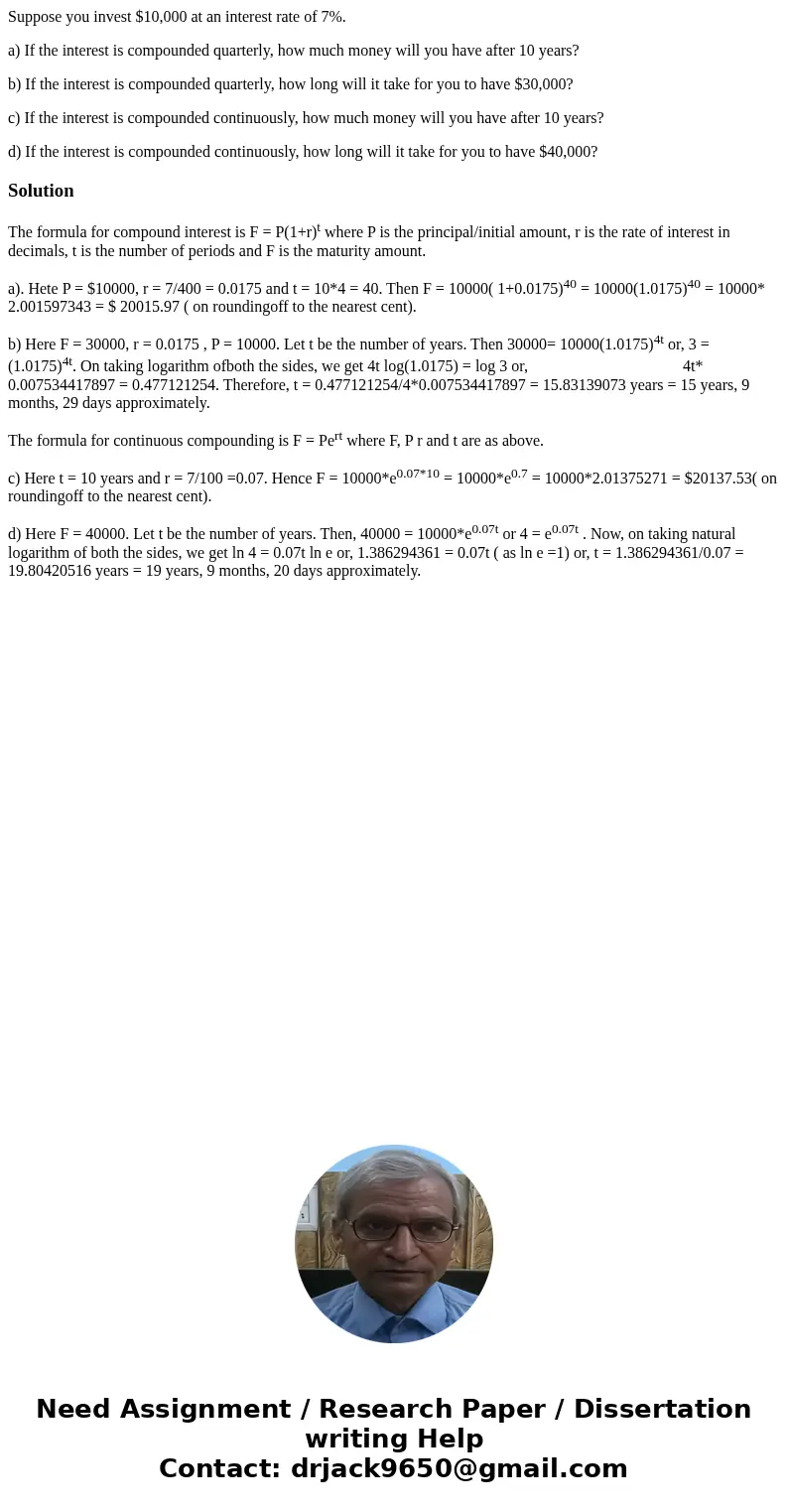Suppose you invest 10000 at an interest rate of 7 a If the i
Suppose you invest $10,000 at an interest rate of 7%.
a) If the interest is compounded quarterly, how much money will you have after 10 years?
b) If the interest is compounded quarterly, how long will it take for you to have $30,000?
c) If the interest is compounded continuously, how much money will you have after 10 years?
d) If the interest is compounded continuously, how long will it take for you to have $40,000?
Solution
The formula for compound interest is F = P(1+r)t where P is the principal/initial amount, r is the rate of interest in decimals, t is the number of periods and F is the maturity amount.
a). Hete P = $10000, r = 7/400 = 0.0175 and t = 10*4 = 40. Then F = 10000( 1+0.0175)40 = 10000(1.0175)40 = 10000* 2.001597343 = $ 20015.97 ( on roundingoff to the nearest cent).
b) Here F = 30000, r = 0.0175 , P = 10000. Let t be the number of years. Then 30000= 10000(1.0175)4t or, 3 = (1.0175)4t. On taking logarithm ofboth the sides, we get 4t log(1.0175) = log 3 or, 4t* 0.007534417897 = 0.477121254. Therefore, t = 0.477121254/4*0.007534417897 = 15.83139073 years = 15 years, 9 months, 29 days approximately.
The formula for continuous compounding is F = Pert where F, P r and t are as above.
c) Here t = 10 years and r = 7/100 =0.07. Hence F = 10000*e0.07*10 = 10000*e0.7 = 10000*2.01375271 = $20137.53( on roundingoff to the nearest cent).
d) Here F = 40000. Let t be the number of years. Then, 40000 = 10000*e0.07t or 4 = e0.07t . Now, on taking natural logarithm of both the sides, we get ln 4 = 0.07t ln e or, 1.386294361 = 0.07t ( as ln e =1) or, t = 1.386294361/0.07 = 19.80420516 years = 19 years, 9 months, 20 days approximately.

 Homework Sourse
Homework Sourse